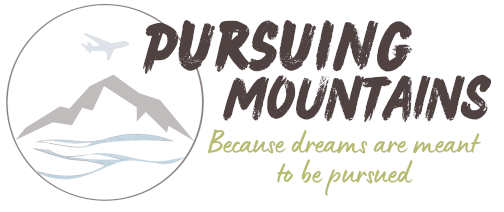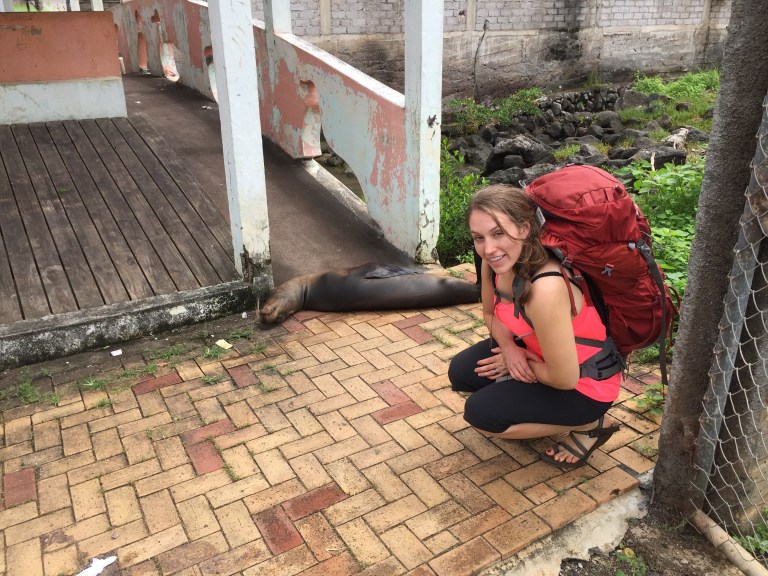So you want to travel all the time but have limited days off of work? This is the constant struggle of those of us with the travel bug but have to work full-time. Although you may feel discouraged, with the proper strategy, you can still manage to travel a lot while working a full-time job.
We love to travel and go on wild outdoor adventures, but until recently, we have always had to align it with our full-time jobs. Granted, we had more time off than the average American, but it was still not nearly enough time to fit in all the travel we wanted to do (is there ever enough time?). Here is our list of tricks we have discovered that have helped us to maximize our time off of work to fit in more travel while working full-time jobs.
1. Plan trips around the holidays
Most Americans get at least 5-8 holiday days off each year. These holidays can be utilized to stretch your time off. We have done this for many of our trips. We timed our trip to the Balkans around Labor day weekend in September, our Nepal trip during American Thanksgiving, Colorado was during the 4th of July weekend, and Ecuador was over Christmas and New Years. When you get somewhere between 15-20 paid days off of work these extra days can really add up! Also, at my last job I was able to work on holidays and “bank” those hours to use later which was awesome as I was able to avoid going on trips when everyone else was out using their holidays. It doesn’t hurt to ask!
2. Negotiate to work extra hours that you “make-up” while traveling
This is something I have done particularly around work trips, or big events where there are really long working days. If you work extra hours beyond your typically 40 hour work week, it doesn’t hurt to ask about taking time off afterwards to make-up for that. Also, see if your boss will let you work a weekend day before your trip and “bank” those hours for the trip.
3. Flex work week hours
Want to go on a long weekend somewhere but don’t want to use your precious paid time off? This is where asking your job about flexing your time off is important. I’ve taken many long weekends with some iteration of flexing my work hours. For example, I’ve done this by working four 9 hour days and taking a half day on Friday to jump start the weekend. I’ve worked four 10 hour days leading up to a trip then took a long weekend. Once, I was even able to take a 4 day vacation without using any vacation days by working four 10’s on each end of the trip. However, I’ll warn you that this does make for an exhausting week and if your travel style is like ours and you cram in a lot of physically demanding activities you may really need a vacation from your vacation afterwards.
4. Work remotely strategically
Working remotely has changed the game for travelers. I have met people during our travels working regular full-time jobs and getting paid American salaries but working in places like Colombia or Brazil. The common sentiment I heard from travelers is that they never formally asked to work remotely, it’s more of a “don’t ask, don’t tell” situation and many people are getting away with it all over the world. You do need to slow your travel WAY down to do this and there are some downsides, but this is a great way to travel slowly while earning a salary. By the way, this is possible with van life travel as well. We work from our van while traveling the US, and we’ve met others doing the same!
I know not all jobs allow full-time, remote work, but Alex and I have had the flexibility of working remotely at least 1 day per week for all of our professional jobs even pre-pandemic. If your job does not offer at least one day off per week, it never hurts to ask. We have used this to our advantage especially on travel days and for long weekend warrior excursions. For example, we made a trip from Seattle to Bend, OR to go rock climbing at Smith Rock. We drove down Thursday night after work to my mom’s near Portland, OR and then we worked remotely on Friday. Then Friday night we drove the rest of the way to Bend, therefore, eliminating the need to use time off to travel to our destination. We were able to get an early start on the rock Saturday morning, without being exhausted from a long travel day which was an added bonus!
5. Reduce ground transportation if possible while traveling
This is something that has been hard for us to learn as we tend to be very careful with our money and flights tend to be more expensive. However, when you consider how much each paid day off is worth monetarily (your hourly pay rate * 8 hours), it really should make you question long, unnecessary bus rides during your travels. For example, when we were traveling in Peru we could take either a 20 hour bus ride from Lima to Cusco, or we could take a 1.5 hour flight. Rather than using one of our precious days off to take the bus, we decided to spend the extra money to fly to Cusco instead, as our time off of work would have been worth more than the extra cost of the flight. Another option is to avoiding flying during work hours, even if the alternative is more expensive. This is a strategy we’ve used rather than using that precious time off just to sit on a plane.
6. Try to take unpaid time off of work
The idea of being may sound unappealing but considering that time is worth more than money, if your job will let you take unpaid time off you should (and it doesn’t hurt to ask about it, even if there is no official policy). I had total support from one of my supervisors when I asked for a week of unpaid time off work for our trip to the Balkans which occurred only 6 months after I started that job. I was salaried so I wasn’t sure they would allow it, but they did! It was very straightforward and as long as I did not take a full 30 days of unpaid time off a month I was still able to maintain my benefits.
7. Plan your time off
My final tip is to figure out what kind of travel you need in order to be happy. Would you prefer more frequent trips each year to break up the work year, or would you prefer to use most of your time off for one big trip? We found that we had to take off at least 2 weeks in a row each year or we felt like we never able to fully get out of work-mode. So we typically planned our time off around one big trip, but also fit in many 2-3 day weekend trips throughout the year. Find out what works for you, and use these strategies to maximize your paid-time off.
I hope this helps you think of ways to fit in more travel while working a full-time job! It was not uncommon for me to plan out two years in advance saving up all of our allotted days off of work and perusing calendars for holiday weekends we could use strategically. I would love to hear your thoughts. What are your tips for maximizing time off?
Happy trails and travels!
-Liz

